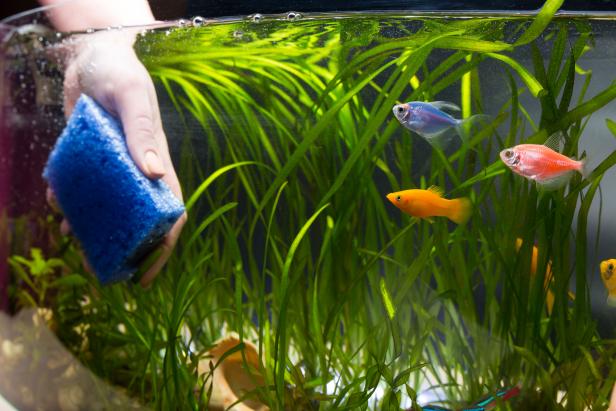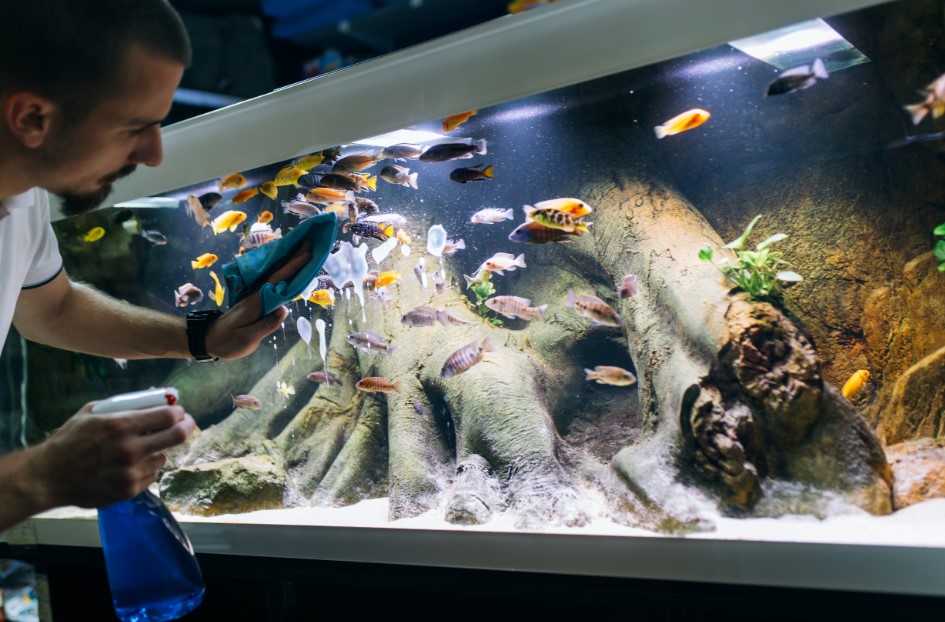Fish tanks are considered a part of the branch of aquaculture. Aquaculture is the farming or cultivation of aquatic animals and plants. They usually hold water, fish, plants, and other organisms in captivity for either food production or public display. Fish tanks are often popular with people who have an interest in keeping marine life as pets. The creation and use of fish tanks have been around for thousands of years. In some cultures, fish tanks were thought to have magical powers because they trapped mischievous spirits in the water.

A dirty fish tank is a common problem for many pet owners. Not only do people often leave fish food in the tank, but they also tend to leave leftover food or fish waste on the surface of the water. The filth that builds up on your tank walls will eventually cause bacterial growth and if not cleaned out regularly, will eventually lead to trouble. Bacterial growth in a small aquarium can lead to green algae which in turn can seriously reduce the effectiveness of your aquarium filter.
How to clean a dirty fish tank
Below are ways how to clean a dirty fish tank.
1. Purchase aquarium cleaning tools
There are many fish tank cleaning tools you can purchase in stores and online, but if you intend to save some money, you don’t need to buy all of them. One of the most essential cleaning tools is the net. Nets are great for removing large amounts of debris that have settled on the bottom of the tank. Other common tools used by aquarists may include a hose pump, scraper, siphon hose or tube, heater sponge, heater guard, and gravel vacuum cleaner. The best fish tank cleaner tool is the one that you find suitable for your fish tanks. There are many brands and models of fish tank cleaners available in the market, ranging from household cordless vacuums to huge industrial-grade aquarium cleaning machines.
2. Fill up your aquarium with water
Before beginning cleaning activities, measure the amount of water in your fish tank and fill it up with clean water. If you use a tank brush on the bottom portion of your aquarium then add clean water to cover the net and remove any big debris that may be stuck on it. Remove as much waste on the bottom plate as possible before adding more water to cover any remaining waste. The tank brush can be used for rinsing and cleaning as long as you allow it to dry out before placing it back inside the tank.
3. Take out the aquarium filter
If your fish tank has a built-in desktop filter, take it out and rinse off any visible dirt or debris. Do the same with the other parts making up your filter. The reason why it is best to remove your fish tank from its regular location and place it somewhere safer away from other items is because of potential damage to the floor and walls caused by flooding when you turn on your heater again. If your desktop tank does not have an integrated filtration system then you will need to purchase an external pump and filter. An external aquarium pump should be placed at least ten inches away from your fish tank as well.
4. Replace the filter sponge
If your fish tank has an internal filter that is made up of a sponge, rinse it off with vinegar. If you have a removable filter, then choose which pieces need to be replaced. It is essential to replace the filter sponge or filter mesh after cleaning and disinfecting your fish tank.
5. Clean the glass and tank walls
Fill up a bucket with warm water and add one part of bleach and four parts of water. Do not mix it up since you want to make sure that you really get all the bacteria off your aquarium glass as well as spray down all surfaces inside your tank. The sponge from your spray bottle should be used to clean off any stains or detritus that stick to your tank walls. Always remember that it is very important to use a bucket when cleaning your fish tank with bleach since the bleach can harm your fish if it gets in contact with them.
6. Clean the gravel in the tank
Use a gravel vacuum cleaner to clean out any foreign particles stuck in the gravel at the bottom of your fish tank. Bucket and water are used here again, only this time you need to add some dechlorinate aquarium water while rinsing off all debris out of your gravel box. Gravel or sand should be replaced every year, or sooner if needed.
7. Clean the filter and external tank skimmer
When done with cleaning out the gravel, it is time to remove and clean out your internal filtration system. A manual external aquarium skimmer should be removed from the tank and cleaned with a siphon hose or bucket. Use a siphon hose that has been thoroughly disinfected before placing it back into your fish tank.
8. Clean the heater unit
There are several ways you can clean out your fish tank heater if needed. A desk vacuum, cheap nylon brush, or wet/dry vacuum may be used, but remember to always disinfect them after they have been cleaned. Preventative maintenance will help avoid cleaning them out and replacing them as early as possible.
9. Thoroughly rinse your tank
Fish tanks are not just limited to freshwater or marine species alone. You can also add an aquarium plant or two if you want to give your fish tank a more natural feel. In most cases, the use of live aquarium plants will need a lot of maintenance on your part such as trimming leaves here and there. They are also prone to be attacked by algae in some instances so remember to remove excess growth every now and then.
10. Turn your heater back on
After cleaning and rinsing your fish tank, turn the heater back on. This will help you restore the temperature in your aquarium to normal. You do not have to leave your fish tank heater on overnight at all since it is very energy-efficient anyway.
Conclusion
A fish tank regularly requires cleaning. You need to change the water at least every day or so, plus clean the gravel ornaments and the detritus that accumulates on the bottom of your tank. All aquarium filters need to be cleaned at least once a week and some weekly maintenance should include removing dead leaves, algae, detritus, and plants from your aquarium. Keep in mind that regular maintenance will help you have a healthy aquarium environment and experience fish in abundance.



